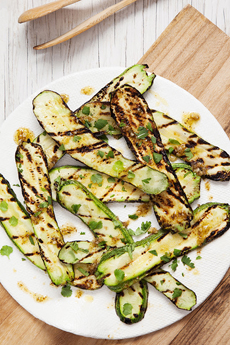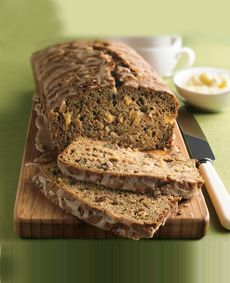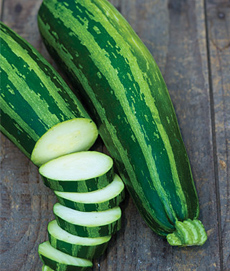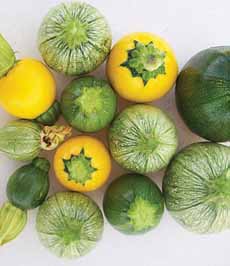TIP OF THE DAY: Recipes For National Zucchini Day
|
August 8th is National Zucchini Day, one of the most versatile foods. Zucchini can be: There’s even a yellow (golden) variety of zucchini, which is easy to confuse with yellow squash. Golden zucchini isn’t grown commercially, because of the confusion with yellow squash. If you’re confused by the color, the easiest way to tell the difference between zucchini and summer squash is by the the shape. Yellow squash usually has a tapered neck and a fatter bottom, while zucchini looks like a cylinder (or a cucumber)—no tapered ends. Some yellow squash can have a top that’s reminiscent of their cousin, the crookneck squash (check out the different types of squash). Purchase smaller rather than larger summer squash. The larger ones are more mature, with larger seeds and more watery flesh. We like to mix both green and yellow for an appealing color combination. Both zucchini and yellow squash are summer squash, thin-skinned varieties that are only harvested during the summer season. They are different varieties within the same genus and species, Cucurbita pepo. Yellow squash is considered to be sweeter. Cook some of each, and eat some raw, and see what differences you find. Zucchini can be served baked, boiled, broiled, fried, grilled, raw, roasted, sautéed, steamed or stir-fried. BREAKFAST A botanical fruit*, zucchini is treated as a vegetable, used as a savory dish or accompaniment (with the exception of zucchini bread and muffins). All squash originated in Central and South America, and was eaten for thousands of years before Europeans discovered it in the 16th century. Cultivation has been dated to 5500 B.C.E., and it was integral in the diets of people living in Central America and South America. Christopher Columbus originally brought seeds back with him, to the Mediterranean region and Africa. However, the long, green zucchini that has become the modern standard were developed at the end of the 19th century near Milan, Italy (from American zucchini). Zucca is the Italian word for pumpkin. The word zucchini comes from the Italian zucchino, meaning a small squash. That’s why zucchini is sometimes referred to as “Italian squash.” Zucchini, Cucurbita pepo, is a member of the cucumber and melon family, Cucurbitaceae. The word squash comes from the Narraganset language of the Native Americans of Rhode Island, who grew askutasquash, “a green thing eaten raw.” The Pilgrims had difficulty pronouncing the whole word, and shortened it to squash. It was an important food crop for both peoples. A word about squash blossoms: A long orange blossom grows on the end of each emerging zucchini. It is considered a delicacy, and can be stuffed and fried or pan-fried plain. Alas, this treat was not widely known in our youth, when we grew zucchini at home; and Mom simply tossed them out. |
 [1] Grilled zucchini with cumin, mint and balsamic glaze. Here’s the recipe from Good Eggs.
|
|
|
|
||







